The History of Egypt
Ancient Egypt enjoyed a long and varied history. Knowledge of Egyptian chronology is necessary to understand the country’s history. Scholars divide the history of Egypt into periods and dynasties but these do not always reflect changes in royal lines. Sometimes, the divisions reflect changes in architecture or in the pharaohs’ capital. During the intermediate periods, dynasties ruled at the same time in different parts of Egypt.
Predynastic Period (c.5300-3000 B.C.)
Neolithic
The first part of the Predynastic period is the Neolithic period. Agriculture became the main food source in the Nile Valley and communities worked together to raise food. Egyptologists discovered pits used to store grain. They also found Beads and cosmetic palettes in Neolithic tombs.
Some communities also got food from domestic animals, fishing and hunting. One Neolithic site, Naba Playa, was larger than normal and had an unusual feature that scholars believe to be a religious site. This was a large megalithic complex consisting of arrangements of rocks of different sizes.

© fmpgoh - Grave from the early badarian period
Badarian Culture
This culture marks some of the earliest examples of agriculture in Upper Egypt and most of its relics come from cemeteries. These cemeteries show signs of social divisions because wealthy graves were in one area. All the bodies were in the same position and faced in the same direction. Some examples of Badarian pottery have thin walls that later cultures did not emulate. The jewelry found to date is usually made of bone or ivory.
Naqada Culture
Naqada culture is also known through cemeteries and covers three periods. Thousands of graves from Naqada I contain goods including animal-shaped cosmetic palettes. Some burials included rectangular coffins and most contained only one body. They contained goods made of hard and soft stone. These included disc-shaped mace heads and human figurines of hunters or warriors with beards. Context suggests the Naqada people saw beards as symbols of power.
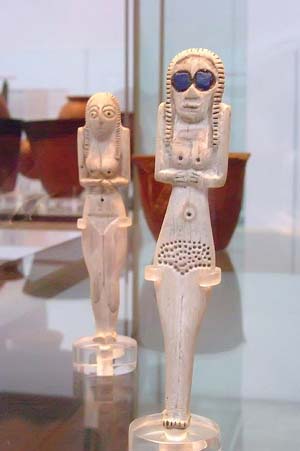
© Mary Harrsch - Naqada figurines
Naqada II shows some differences from Naqada I in tomb size and grave goods. Multiple-body burials increased and the tombs were larger with more goods. Some burials show the evidence of the earliest use of linen for body wrappings. More metal goods were in evidence and mace heads were pear-shaped.
Naqada III shows the beginning of territorial states and includes the kings dubbed Dynasty O by scholars. These kings ruled before the unification of Egypt and scholars know little about them beside their names. Certain tombs had many rooms and early hieroglyphics on some labels.
Artifacts made of precious materials including; gold, lapis lazuli, and silver. These materials show the Naqada civilization traded with other cultures. Scholars discovered some religious buildings but little information currently exists about the rituals practiced.
Early Dynastic Period (c.3000-2686 B.C.)
1st Dynasty
The pharaohs created state goods, shown by labels, used as part of a taxation system. Officials appointed by the king oversaw irrigation and began standardizing hieroglyphic writing. They also helped support the funeral programs and religious sites. Priests used certain funeral rites for the pharaoh only during this period.
Abydos was the site where many of the 1st Dynasty’s kings built their tombs but people plundered and burned them in antiquity. They had a unique feature found only in the tombs of these pharaohs: bodies of humans sacrificed to serve the pharaoh in the afterlife. Egyptologists excavated religious sites and artifacts including a compound for the goddess Neith. Priests established funerary cults to provide for the pharaoh's needs in the afterlife.
During this dynasty, many cultural changes exist in the archaeological record. Art styles became more formal and the pharaoh supported artisans and workers to make goods. Egyptologists found a bracelet made of amethyst, gold, lapis lazuli and turquoise. Copper from the Eastern Desert or the Negev/Sinai show mining or trading expeditions took place.
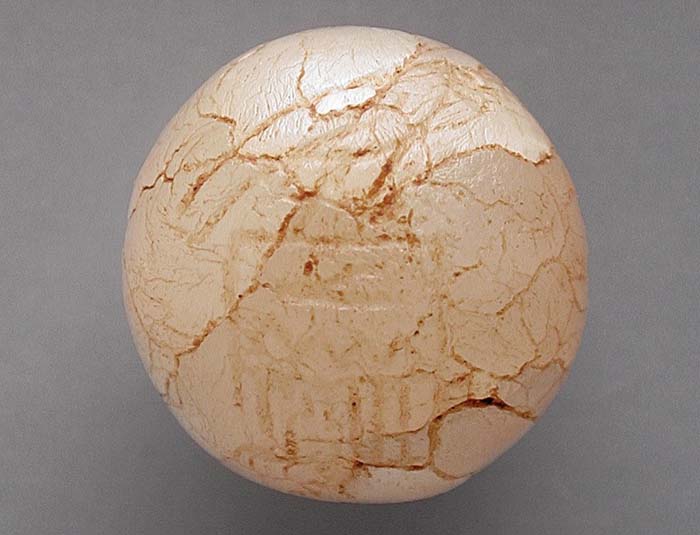
© Ashley van Haeften - Inscribed Marble, 1st dynasty
2nd Dynasty
Little evidence of many of these kings exists in the current archaeological record. The pharaohs established the economic and political foundations for a strong central state. Khasekhemwy’s tomb had a large gallery divided into at least sixty rooms. Limestone was the medium used to make his burial chamber which is the oldest stone building found in Egypt so far.
The Early Dynastic Period was a time when Egypt's government formed and built the society’s foundations. The pharaohs established trade with the Sinai, Palestine, Lebanon, Nubia and the Eastern Desert. Writing helped the Egyptian state organize and the pharaoh was Egypt's ultimate authority.
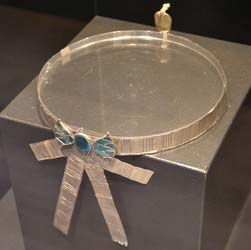
© Jan - 17th Dynasty Diadem
Old Kingdom (c. 2686-2125 B.C)
The division between the Early Dynastic Period and the Old Kingdom is artificial. Its first kings were descended from pharaoh Khasekhemwy. Egypt was almost self-sufficient with few outside enemies. The familial relations between some pharaohs are unclear due to insufficient information.
3rd Dynasty
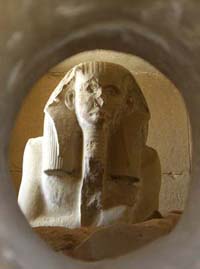
© Vincent Brown - Djoser's Ka
Chamber
Djoser was the most famous pharaoh of this dynasty and was well regarded by later pharaohs. He built the first large stone building, the Step Pyramid. Designs called for the tomb to be a mastaba with a burial chamber below it but it became a six-step pyramid.
In some kings’ lists, scribes wrote Djoser’s name in red. Later pharaohs regarded his reign as the beginning of pharaonic history. After Djoser’s death, the step pyramid became the preferred tomb type for his successors. The builders did not complete these tombs due to the short reigns of their builders.
4th Dynasty

© kairoinfo4u - Snefru's Red Pyramid
Snefru made a lasting impact on Egypt by turning the external form of a pyramid into that of a true pyramid. He also changed the orientation of the funerary complex into an east-west orientation. Snefru completed two pyramids during his reign. The first, the Bent Pyramid, got its name because its angle changed during construction. Snefru’s tomb was the Red Pyramid, made from red limestone.
Khufu was Snefru’s son and he built the Great Pyramid of Giza. His burial chamber was in the center of the pyramid rather than underneath the pyramid. Egyptologists discovered two boat burials beside the pyramid and restored one of them. Khufu built three pyramids for his queens on the plateau beside his tomb.
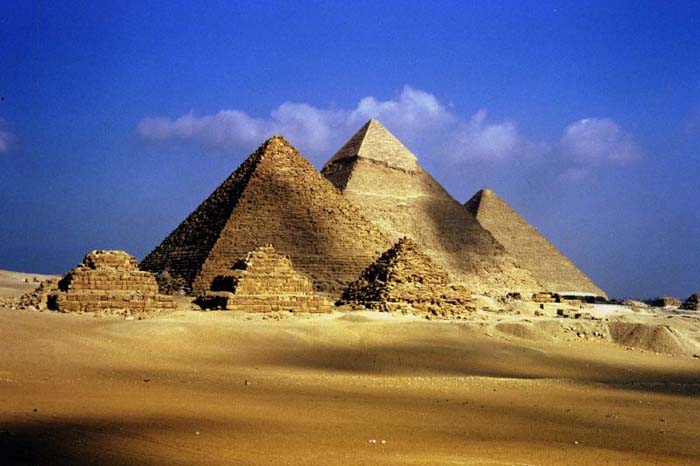
© DragonWoman - The Pyramid Complex at Giza
Two of Khufu’s sons ruled after him; Djedefra and Khafra. Djedefra had a short reign but he was the first pharaoh to use the title “son of the god Ra”. Khafra built the second largest pyramid at Giza. This building appears to be the same size as the Great Pyramid because it was on a higher elevation.
This dynasty made changes to the agricultural production in Egypt. It was necessary to improve yields to allow portions of the population to build pyramids. Pharaoh’s power was absolute so he was able to amass large groups of people to build his tomb. Royal family members filled many of the highest administrative positions. The pharaohs built sun-temples which show the ascendancy of the god Ra.
5th Dynasty
Scholars found important papyri documents in the pyramid temple of Neferirkara. These documents discuss the day-to-day running of the pyramid complex. They provide lists of the produce provided to the temple and of the priests serving there. Egyptologists also found inventories of the temples’ items and personal letters.
Several aspects of the kingdom either changed or became more elaborate. The royal family withdrew from administrative duties which allowed the elite to gain power. Egyptians saw the needs of the living and the dead as equal. Pharaoh began to make more donations to various local gods. Pharaoh sent expeditions to Punt and brought back malachite, myrrh and electrum (and alloy of gold and silver).
Another important change began in the reign of King Unas; the introduction of the Pyramid Texts. These texts decorated the ceiling of his burial chamber and they are the earliest large body of religious texts found to date. The Pyramid Texts track the development of religious ideas during this period. They provided spells and information for the king’s safe journey through the underworld. By this time, Osiris had progressed from a local deity to the main god of the dead.
6th Dynasty
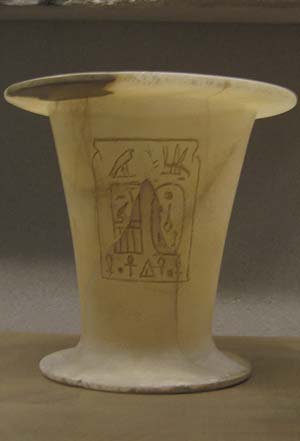
© Peter Roan - Royal vessel from the 6th Dynasty
During this dynasty, many ideas and aspects of the government changed. Kings were no longer seen as untouchable. The Biographical Text of Weni mentioned a plot to kill King Pepi I. Local officials became more powerful which decreased royal authority.
Pepi II was the most famous of this dynasty’s kings. He was six when he inherited and he ruled for 94 years, the longest reign in Egypt’s history. During the second half of Pepi II’s reign, he was unable to rule well because the state collapsed. The people expected the pharaoh to provide food and safety for his people but he was unable to do this. Administrative offices became hereditary and this lead to a growth in their holders’ power. Centralized government vanished as did the pharaoh’s practical power.
7th and 8th Dynasties
Many ethereal kings all named Neferkara.
First Intermediate Period (c.2160-2055 B.C.)
This period saw a change in the cultural demographic of the country. Nobles moved to smaller cities and took the art and culture of the capital with them. Rural Egypt became wealthier and this allowed the people to build larger tombs. Artisans developed scarab shaped seals during this period.
Urban centers, which were the centers of local administration, governed the rural areas. Priests introduced new funeral ideas in these areas. Artisans made masks for mummies and made objects to serve as grave goods. The first coffin texts, meant to guide souls in the Tuat, date to this time.
9th and 10th Dynasties
These dynasties moved the capital to Herakleopolis and had no control over southern Upper Egypt. They fought with the Theban pharaohs of the 11th Dynasty. These pharaohs did not build monumental buildings and famines plagued their reigns. Kings bragged about feeding their people which they saw as a great accomplishment. Local governments fought with each other and had independent reigns. The pharaoh still possessed the religious power in the land.
11th Dynasty
This dynasty began in the 4th Nome at its capital of Thebes. Some of the Middle Kingdom rulers referred to the 11th Dynasty pharaohs as their ancestors. The necropolis (city of the dead) of el-Tarif held the saff-tombs of the 11th Dynasty. The tombs of courtiers and local citizens surrounded the saff-tombs of the pharaohs.
Intef II ruled for 50 years and began moving to conquer more of Egypt. He controlled most of southern Upper Egypt and began pushing north. This pharaoh built the oldest surviving fragment of a temple at Karnak.
Middle Kingdom (2055-1650 B.C.)
11th Dynasty
The 11th Dynasty continued into the Middle Kingdom after Mentuhotep II re-united Egypt. He ruled for 51 years and deified himself to show his right to rule Egypt. Mentuhotep II appointed governors to oversee the administrations of Upper and Lower Egypt. The pharaohs who followed him reinstituted the cult of kingship and built temples and chapels.
12th Dynasty
These pharaohs moved their capital to Ijitawy, a city Egyptologists have yet to discover. The middle class gained wealth and power as seen in the increase in jewelry caches belonging to them. The pharaoh’s built a series of fortresses to protect the kingdom.
Senusret I erected a chapel made of alabaster at Karnak and scholars have rebuilt his chapel. He standardized formal artwork in style and form. Evidence indicates that he supported literacy for women, as seen in letters between women.
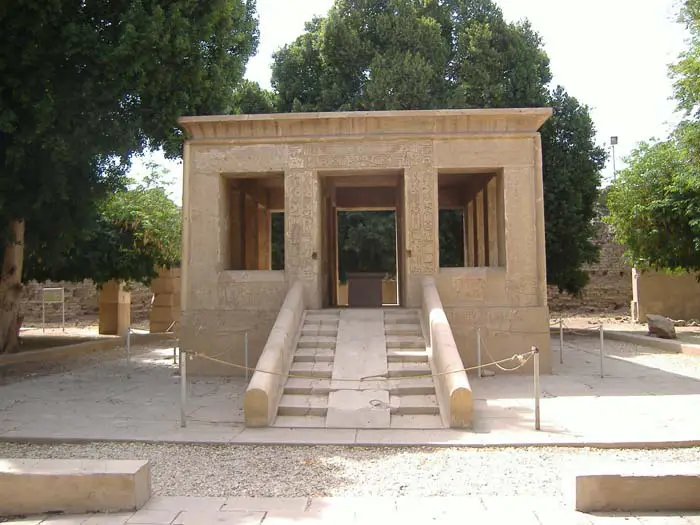
© Hannah Pethen - Chapel of Senusret I at Karnak
Senusret II began the irrigation of the Faiyum region to allow for the cultivations of more land. He built a mud-brick pyramid encased in limestone at the site of Lahun. Egyptologists found the jewelry of Princess Sathathoriunet near this pyramid.
13th Dynasty
Itijawy was still Egypt’s capital but different lineages held the kingship. Scholars suggest that a “circulating succession” was set up among the leading families. This led to short reigns but the bureaucracy functioned in the same way. Pharaoh refined the duties of officials and made them more precise. This restricted the activities of individual officials and lessened their powers.
Egyptologists discovered and excavated urban centers dating to this period. They found the earliest mud brick mold yet discovered which is like later examples. Scholars found a gynecological papyrus that is the oldest collection of cures for female illnesses.
Osiris was the main god of the necropolises and commoners had more funerary rites. This included the Coffin Texts and reflected changes in spiritual ideas. At first, the Egyptians believed that only the pharaoh had a ba (spiritual force). During this period, priests taught that all people had a ba. Mummification became widespread but it was not effective.
Archaeological evidence shows the cultural changes in this period. Artisans made models of everyday life for funerary purposes. Literature of many types flourished including narratives, religious texts and philosophical treatises. The lives of human beings became more important in literary works.
Second Intermediate Period (1650-1550)
During the later part of the Middle Kingdom, Asiatic groups moved into the Delta. This period began when Egypt splintered and capitals existed at Avaris, Kush and Thebes. The people groups ruling here were the Asiatics, the Nubians and the Egyptians. One hundred and five royal names from this period exist.
14th Dynasty
This dynasty's capital was Avaris which was in the Western Delta. The Hyksos, a group of Asiatics, whose names mean “rulers of foreign countries”, ruled here. The origins of the Hyksos are unknown but Avaris’ layout is Syrian. This city had periods of rapid cultural change because of periodic new arrivals from Asia. The rulers used pharaonic titles and their patron god was Set.
15th Dynasty
Avaris was also the capital of this Hyksos dynasty and evidence indicates the throne passed from father to son. The most important pharaoh was Apepi who ruled for at least 40 years. He attacked Memphis to gain control of the Nile and fought with Thebes. Cusae served as the border between the two kingdoms. Evidence of roving bands of mercenaries from each side patrolling the border exists. Avaris and the kingdom of Kush were allies and trading partners.
16th Dynasty
Theban kings contemporary with the 15th Dynasty.
17th Dynasty
This dynasty was also based in Thebes and scholars discovered that at least two of these kings were relatives. The pharaohs had many military officials and their confidence and power were expanding. The first examples of the Book of the Dead date from this dynasty. The bodies of two rulers, Taa and Queen Ahhotep, were in the Deir el-Bahri cache. Priests took some of the royal mummies from desecrated tombs and hid them in two caches near Deir el-Bahri.
The war between Avaris and Thebes lasted for at least thirty years. This was a series of small wars, the first of which was between Apepi and Kamose. Eleven years passed before another campaign because Apepi and Kamose died after their battle. Kamose’s heir, Ahmose I, was a boy when he succeeded. His mother, Ahhotep, served as his regent and kept the kingdom together.
Ahmose I marched north and captured key cities to cut off the Hyksos’ communication lines. He besieged Avaris which took several years to fall. Evidence suggested there was a mass exodus of the inhabitants, not a mass slaughter. Ahmose I reunited Egypt and began the New Kingdom Period.
New Kingdom (1550-1069 B.C.)
18th Dynasty
Ahmose I founded this dynasty and his reign was full of battles. He began several building programs which his son completed. During his reign, evidence indicates there was contact with the Minoans on the island of Crete. Minoan patterns on Egyptian-made objects show this contact. Ahmose I built a palace at Avaris to create a commercial center and worshiped Amun.
Amenhotep I competed his father’s military campaigns and building programs. Amenhotep I and his mother became gods after their deaths and they were the patron gods of Deir el-Medina. This town was the home of the tomb workers who built the Theban tombs and funerary temples. He helped set up the idea of a closed nuclear royal family by decreeing a royal woman could only marry a king.
Thutmose I’s parentage is unknown but his wife’s name was Ahmose so she might have been Amenhotep I’s daughter. Ahmose was the mother of Hatshepsut but not of her husband’s heir, Thutmose II. Thutmose II ruled for a few years and his heir was a child. Hatshepsut was Thutmose III’s regent and later ruled in her own right. She depicted herself as a man, built a beautiful funerary temple and sent a trade mission to Punt. Hatshepsut emphasized her descent from Ahmose I to justify her rule.
Thutmose III campaigned into the Levant and ruled in his own right for over 30 years. He conducted building projects throughout the land of Egypt. At the end of his reign, Thutmose III began to dishonor Hatshepsut’s monuments and erase her name from monuments. He did this to end any claims her family had to the throne of Egypt.
Amenhotep II ruled for around 26 years and expanded temples all over Egypt. He sired more children than his predecessors to insure the line of succession. His son, Amenhotep III, ruled for 38 years in a time of peace and affluence. Royal women gained more important roles in religious rituals. Amenhotep III placed more emphasis on the worship of solar deities and he named his palace “the gleaming Aten”.
Amarna Period
Amenhotep IV built a temple to Aten, the sun-disc, at Karnak during the first years of his reign. In the fifth year of his reign, he built the city of Akhetaten (modern Amarna) and forbade the worship of any god but Aten. Around this time, Amenhotep IV changed his name to Akhenaten. His wife, Nefertiti, held an important role in the new religion. Egyptologists have found Aten temples in several major cities.

© kairoinfo4u - Sculptures of Akhenaton and Nefertiti
The royal family’s depictions show them with unusual features. Their images show them with the Aten, a sun disc with rays coming from them, each with a hand on the end of each ray holding an ankh. The king had a long thin face with a pointed chin and a long neck. He had large, almost female breasts and a protruding belly. The family was often shown hugging and kissing.
Tutankhamun was a child when he inherited and he abandoned Amarna and re-established the worship of the old gods. His successor was Horemheb, a military official but he was gone when Tutankhamun died so Ay took the throne. Tutankhamun’s widow tried to marry a Hittite prince so he could became pharaoh. Allies of Horemheb killed the prince on his way to Egypt and this caused a war with the Hittites.
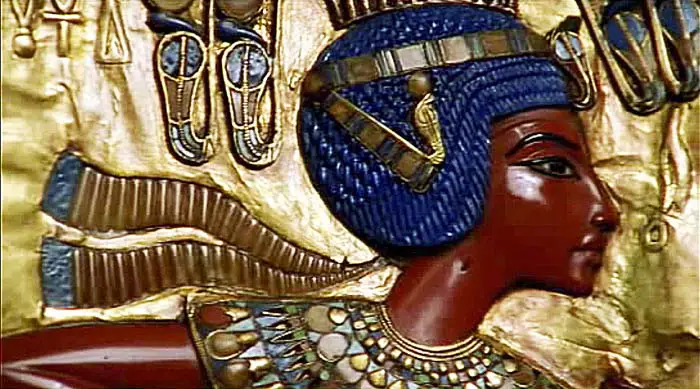
© tutincommon - Tutankhamun depiction on the back panel of his throne
Horemheb became pharaoh but the length of his reign is unknown. He worked to stamp out lawlessness in the land. Horemheb claimed that Horus chose him to rule Egypt and his death ushered in the 19th Dynasty.
19th Dynasty
The pharaohs of this dynasty saw Horemheb as their period’s founder. Ramesses I was the first pharaoh of this dynasty and his reign was short. He insured that his son, who was an adult when he became pharaoh, inherited. Seti I restored the old religion and re-built Hatshepsut’s funerary temple. He also conducted foreign military campaigns.

© vipez - The Temple of Hatshepsut
Ramesses II began his rule as a co-regent and he deified himself to emphasize his family’s right to rule. He reigned for 67 years and had at least 95 children. Ramesses II conducted extensive building plans or re-appropriated items made by other pharaohs. One of his projects was a giant, multi-room tomb for his children.
Ramesses II fought with the Hittites for several years. He later made peace with them and married a Hittite princess. The rest of his reign was peaceful and he built the city of Piramesse in the Delta to be closer to Asia. Before his death, Ramesses II buried his oldest twelve sons.
Merneptah was the thirteenth son of Ramesses II and he conducted several military campaigns. One of his victory steles contained the first known mention of Israel. Merneptah also had to deal with the invasions of the Libyans and the Sea Peoples.
Tausret was the daughter of Merneptah and the widow of his heir Seti II. Her stepson, Saptah, was a young boy with a bad leg at her husband’s death. Tausret was his regent and might have ruled in her own right for two years. Her death ended the 19th Dynasty.
20th Dynasty
Sethnakht ended the period of civil unrest following Tausret’s death and declared himself pharaoh. His son, Ramesses III, sought to emulate Ramesses II. He used Ramesses II’s throne names and named his sons after his predecessor’s children. Ramesses III had to fend off several invasions by the Sea Peoples.
Some of Ramesses III’s administrative changes caused him, and his successors, problems. He re-organized the agricultural allotments given to the temples. By the end of his reign, one-third of the farmland belonged to the temples. This led to food shortages among the state workers and the first recorded strikes.
As the 20th Dynasty continued, the high priest of Amun gained more power. The pharaoh now had little control over the high priest’s appointment. Many of the kings had short reigns plagued by famine, foreign raids and civil unrest. Beliefs about Amun-Ra changed and he became a distant god. All the other gods and goddesses were manifestations of Amun-Ra. The god was also a personal deity who determined the fates of countries and individuals.
Third Intermediate Period (1069-664 B.C.)
This period differed from the other intermediate periods because it was a time of relative stability. Egyptian culture flourished but several dynasties ruled in different areas. The idea of a unified Egypt began to erode and economic problems plagued the pharaohs.
21st Dynasty
The 21st Dynasty ruled the north and some pharaohs might have been Libyan. The high priest of Amun-Ra ruled Thebes and taught that the pharaoh was a temporary appointee of Amun-Ra. The activities of this dynasty are not well documented but they did build at Tanis and Memphis. A princess of this dynasty married King Solomon of Israel which would have been impossible in earlier periods.
22nd Dynasty
This was another northern dynasty of which, Sheshonq I was the most important pharaoh. He re-established political authority and expanded into foreign territories. Sheshonq I named his son the high priest of Amun-Ra and campaigned into the Levant. His successors were unable to continue his attempts of reunification because of the power of local rulers.
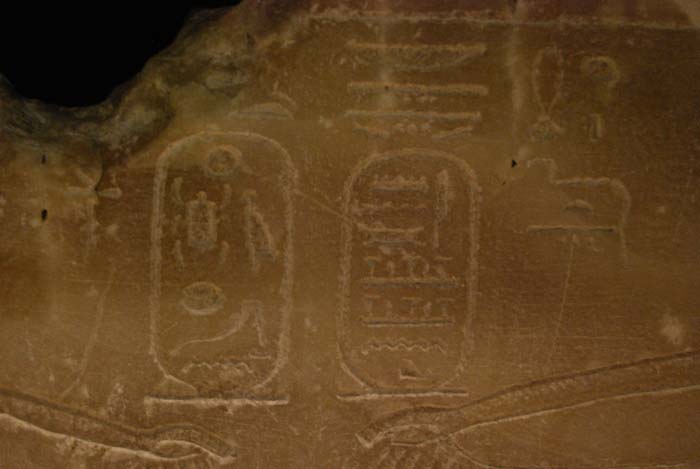
© Heidi Kontkanen - Cartouche of Sheshonq I
23rd Dynasty
Kings based in various capitals who were contemporary with the late 22nd, the 24th and the early 25th Dynasties.
24th Dynasty
This dynasty's capital was in Sais and was a leader throughout the Delta as far south as Herakleopolis.
25th Dynasty
The 25th Dynasty’s main palace was in Memphis and some individuals might have been Nubian. The Nubians respected the religion and culture of the Egyptians. This dynasty established the post of “god’s wife of Amun” held by celibate royal women. These women would adopt an heir from the royal family and eclipsed the power of the high priest. This dynasty had to defend against the advancement of Assyria.
Many government posts during this dynasty were hereditary. Military might served as the basis for this dynasty’s power. It also saw a rise in deity Triads, consisting of a god, a goddess and their child. They re-used older monuments and people stripped older royal mummies of their grave goods. This dynasty’s capital was at Memphis.
Late Period (664-332 B.C.)
26th Dynasty
Psamtek I reunited Egypt with Assyrian support. His centers of power were at Sais, Memphis and Athribis. Psamtek I ended his connection with Assyria and established trade routes with Greece and Phoenicia. He gained power through diplomatic means and made his daughter heir to the “god’s wife of Amun”.
All the kings either built or re-built temples. Their final resting places were in chapel tombs in the cult temple of Neith at Sais. These pharaohs also standardized to order of the Book of the Dead. These rulers moved troops into Asia as far as the Euphrates and favored the Blue War Crown in their depictions. They allied with the Greeks against Persia.
27th Dynasty
This dynasty marks the first Persian Period and began when King Cambyses invaded Egypt. He captured Psamtek III, the last 26th Dynasty pharaoh, and set himself on Egypt’s throne. It is important to remember that the Persian pharaohs lived in modern Iran and some never set foot in Egypt. Classical authors, most of whom were Greek, depict Cambyses in a negative light.
Egyptian evidence shows he was anxious not to offend the Egyptians. Cambyses made an effort to present himself as a pharaoh in several ways. He assumed all the traditional forms of Egyptian kingship. Cambyses was willing to work with the Egyptians and promote them. He also showed great respect for the Egyptian religion.
Over time, resentment grew and problems erupted between the Egyptians and the Persians. The priests of Khnum and Jewish mercenaries at Elephantine fought. It culminated with the destruction of a temple dedicated to Yahweh by the Egyptians. Around this time, Egypt rebelled against Persian rule.
28th Dynasty
This dynasty only had one pharaoh, Amyrtaios, who succeeded in rebelling against Persian rule.
29th Dynasty
These kings had short reigns and many were deposed or murdered.
30th Dynasty
This dynasty came to power after its founder, Nectanebo I, staged a successful military coup. The final native Egyptian pharaoh was Nectanebo II. This dynasty, and the rule of the native Egyptians, ended with the invasion of Persia.
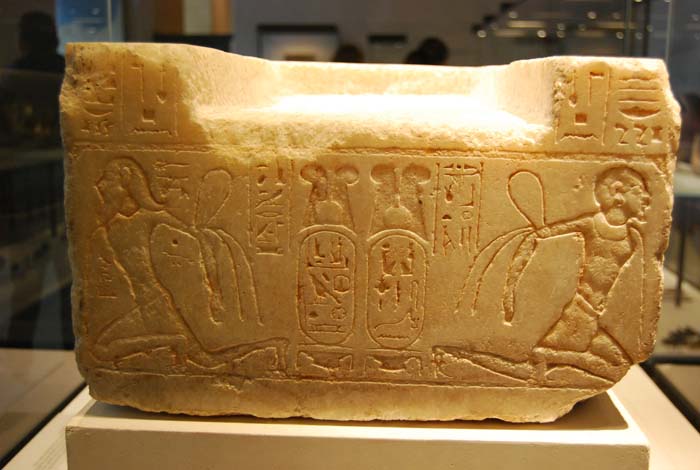
© Heidi Kontkanen - Cartouche of Nectanebo II
Second Persian Period
This period began in 341 B.C. and operated in a different way from the First Persian Period. The kings plundered the temples and destroyed the defensive systems of the major cities. Egypt’s cultural life continued during the Late Period without stopping. The native Egyptians rebelled against the Persian rule and they welcomed the Greek’s arrival.
Ptolemaic Period (332-30 B.C.)
This period began with Alexander the Great of Macedon’s invasion of Egypt. He founded the city of Alexandria and established the Greek government of Egypt. After Alexander’s death, his heirs were unable to keep his kingdom intact. It divided into a three kingdoms; Macedon, the Seleucid Empire, and the Ptolemaic Empire.
The first war of succession took place between two groups of nobles. One group wanted to keep Alexander’s kingdom intact and the other wanted it divided. Ptolemy belonged to the second group and held off two invasions during the first war of succession. He declared himself king of Egypt before the second war began.
Ptolemaic Dynasty
The Ptolemies saw themselves as Greek and they wanted to expand into two regions. They sought to gain prestige by controlling Greek culture centers in Asia Minor and the Levant. There were conflicts with the Selucids and Macedon and they drove the Ptolemies out of Greece and Asia Minor.
This dynasty sought to control the trade routes in Syria to enlarge their economy. At first, the Ptolemies administration was stable and the economy allowed for expansion. After a time, the economy weakened and the Ptolemies could not maintain their army.
Cultural life during the Ptolemaic Period was vibrant and varied. The Ptolemies built the Mouseion to be a center of instruction and research. The Great Library was part of the Mouseion and people traveled all over the Greek world to get texts. By the end of this period, the library had at least 700,000 volumes. Jews translated the Septuagint in the Mouseion.
The Ptolemies had some unique characteristics. First, they regarded the Greek god Zeus as the father of their dynasty. Second, it became normal for full royal siblings to marry. While royal siblings married in early periods, these couples were half-siblings. Internal strive within the family caused problems within the royal family.
Cleopatra VII was the last pharaoh of Egypt who faced Rome’s advance into Egypt. She also fought with her brother/husbands Ptolemy XIII and XIV. Cleopatra's lover, Mark Antony, helped her exert control in Asia Minor and Syrian. Augustus invaded Egypt in 30 B.C. and killed Mark Antony. Records say that Cleopatra VII committed suicide.

© PJMixer - Statue of Cleopatra VII
Roman Period
Roman Egypt had more in common with the culture of pharaonic Egypt than that of Rome. They used hieroglyphics and built temples in Egyptian styles. Mummification was important and Roman coffins had paintings showing distinctive Roman styles and characteristics. The Romans revered Egyptian gods. Scholars discovered papyri and ostracon (pottery shards with writing) recording daily Roman life.
Egypt’s economy had three aspects; agriculture, mines and quarries, and trade. The city of Rome relied on Alexandrian grain ships for food. Rome mined in the Eastern Desert for different types of stone. Egyptian red granite was one of the three most popular types of decorative stones. One type of rock discovered was purple and the emperors considered it valuable. Egypt facilitated Roman trade with India and other areas of the Orient.
Rome associated the Egyptian gods with Greek and Roman gods. During the first century A.D., Christianity started in Alexandria and spread throughout Egypt. After the division of the Roman Empire, Egypt came under the control of the Byzantine Empire. By this time, the emperor had outlawed the worship of the Egyptian gods and Christianity was the Empire’s religion. Roman rule ended when the Arab-Muslim armies conquered Egypt in 642 A.D.
Click here to discover more about Egypt under Roman Rule
Arab-Muslim Period (began in 642 A.D.)
In 642 A.D., Arabic language and culture replaced Egyptian language and culture. Egypt was one of the Islamic world’s cultural and intellectual centers. A succession of caliphates ruled Egypt until Napoleon conquered Egypt. At this time, scholars rekindled interest in the language and culture of Egypt. Today, the Arab nation of Egypt is a tourist destination for those interested in Egypt’s history.
Click here to discover more about the Fall of Ancient Egypt
